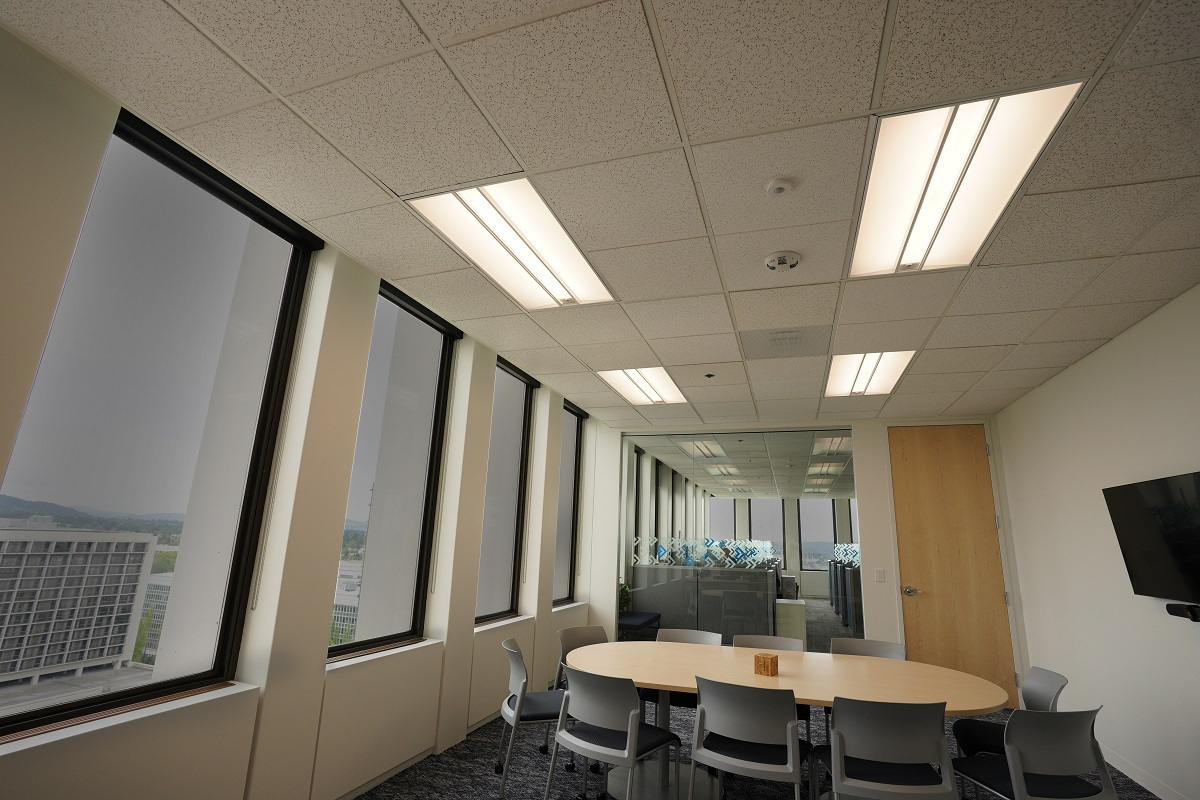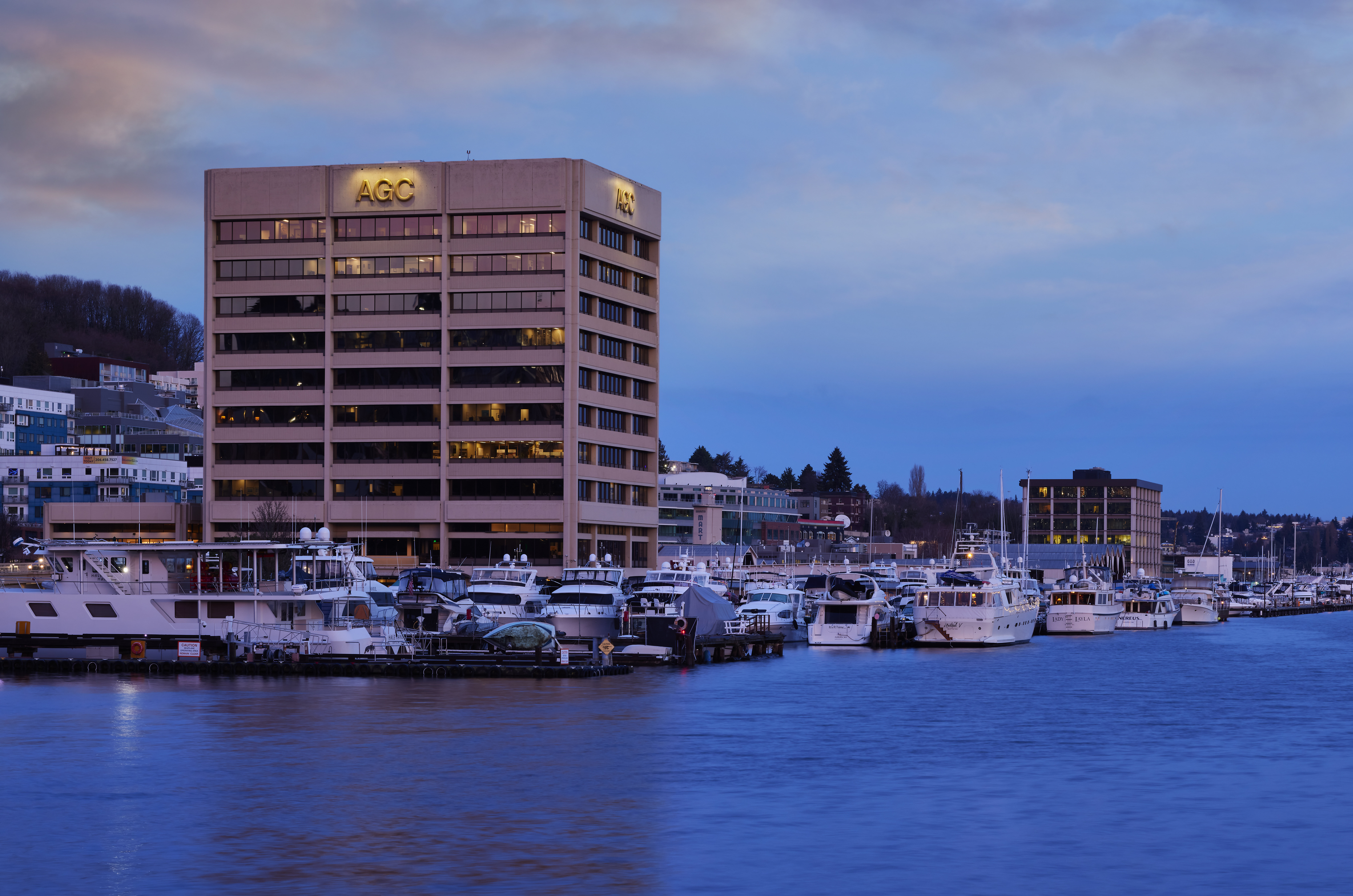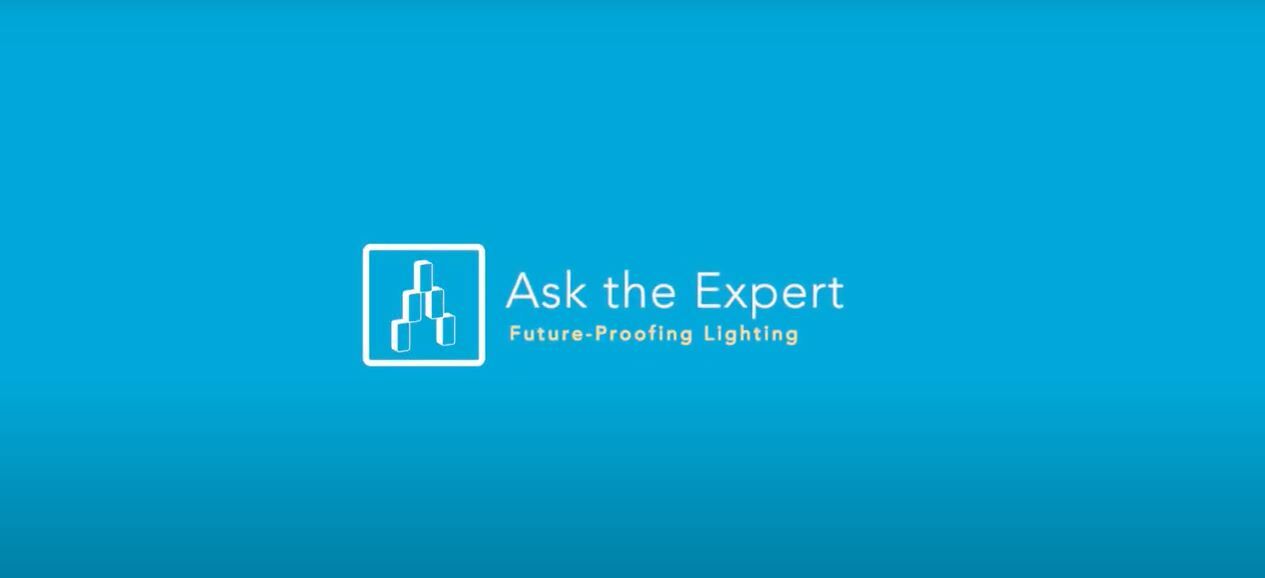Luminaire Level Lighting Control

Let’s talk Luminaire Level Lighting Control (say that tongue twister three times)
For many building managers considering energy and cost savings, lighting and its controllability may not be top-of-mind. But it should be. Here, we explore the benefits, costs and potential challenges of implementing Luminaire Level Lighting Control (LLLC) technology—and how its impact outweighs lighting control systems of yesteryear.What exactly is Luminaire Level Lighting Control?
Great question.LLLC systems are a subset of networked lighting controls featuring sensors embedded in every fixture. This allows ultimate granularity of control, along with the ability to group and regroup fixtures as needed. This is a key feature, particularly as the use of space changes over time. Whether incorporated into office buildings, healthcare facilities, warehouses, new construction, or building retrofits, LLLC systems are well-known for their inherent flexibility across multiple space types and use cases.
Although these types of lighting control systems been around for a decade, the technology has significantly improved in that time. These advancements illuminate a much-needed paradigm shift in the industry (pun intended). According to the Lighting Control Association, modern LLLC systems allow for more granularity than traditional occupancy and daylighting controls. This allows for LLLC to reduce energy use in smaller areas, such as a desk—compared to larger areas, such as an entire office space.
The ability to be more strategic with lighting in a space comes in particularly handy for building retrofits. LLLC technology allows for phased project upgrades as individual fixtures, applied as (1:1) replacement retrofits. Such upgrades come without the cost and operational disruption of a building-wide retrofit.
In other words, most manufacturers of LLLC systems offer scalable options that help building managers pace efficiency upgrades and expenditures.
Why choose LLLC technology over traditional lighting systems?
Because LLLC systems save energy, are smart, and integrate with other systems.Believe it or not, when LLLC technology is used in conjunction with an LED replacement fixture, the combined capabilities enable up to 75% energy savings compared to non-controlled lighting systems without sacrificing a high quality of light.
Many of the country’s top-performing smart buildings leverage the most basic LLLC systems because they offer flexibility, daylight harvesting, and granularity of control. Additionally, they provide a required set of other automated functions like occupancy sensing, continuous dimming, high-end trim/task tuning, and controls persistence. Since each LLLC fixture has its own built-in controller, users can group and regroup fixtures at the touch of a button and without rewiring—often via a tablet or a smartphone app.
If a connected and healthy building is what you’re after, the building-block advantage of an LLLC system is its offering of advanced capabilities such as asset tracking and holistic building-system integration. For example, in a healthcare setting, advanced LLLC technology can help track critical assets such as patient beds and medical carts to reduce time spent searching for them. Some LLLC systems can even integrate directly with a building’s HVAC system to detect when people are in a space and ventilation may be needed. With more manufacturer research and development, these capabilities continue to advance, powering the ability to create smart, highly connected buildings.
Do utility companies incentivize the use of LLLC technology to help defray the upfront costs?
Absolutely, and incentive programs will continue to be a “thing.”Many utilities throughout the Northwest offer incentives, and it’s important to check with your utility company before the installation of an LLLC system to see if any are available in your area. Seattle’s iconic Pacific Tower and the multitenant South Lander Business Park provide great case studies on the use of these systems. Both buildings upgraded to LLLC systems and partnered with a local utility, receiving technical assistance and incentives to help offset the upfront cost.
According to recent research, incremental costs of basic LLLC systems decreased by 28% by fixture between 2017 and 2020. Over the same period, incremental costs for added connectivity—which allows for benefits beyond energy savings—decreased by 16% by fixture. This equates to long-term energy savings and helps businesses save money when making the switch to LLLC.
Will this technology help my building achieve and maintain compliance with emerging codes and future industry trends?
Most definitely.Compliance is more obtainable with LLLC technology when incorporated into some of the latest code versions—such as IECC 2021—as a path to code compliance. Oregon, Washington, Idaho, and Montana all reference LLLC in their state energy-efficiency codes.
Using LLLC in lighting designs can automatically satisfy code-required occupancy and daylight harvesting requirements while, saving design labor. It also offers out-of-the-box simplicity of installation for retrofit projects as wireless LLLC-enabled luminaires only require input power, regardless of circuiting layouts, making control hardwiring a thing of the past.
Can LLLC technology help building owners and operators respond to adverse events such as those experienced during the pandemic?
Yes, and it already has.The pandemic proved to be difficult for facility managers who faced significant new challenges in their day-to-day operations. When keeping occupants safe became a top priority for smart building technologies, it became abundantly clear that LLLC systems served as a key solution, especially when it comes to airflow, occupancy sensing, and in some systems, thermal sensing.
Integration with other building systems such as HVAC or building-management systems can also help increase airflow when more people enter the room. Use of public spaces has changed due to the pandemic. When, how often, and where we work is less structured and our spaces need flexibility to meet the demands of those changes. LLLC systems solve this challenge. Due to the wireless nature of LLLC fixtures, this technology is specifically designed to support changing needs in building spaces over the course of a year, month, or even a day as work schedules and occupancy levels vary.
Is LLLC technology ‘future-proof’ or should we anticipate its replacement by a new smart technology in the near future?
LLLC technology is uniquely positioned to evolve and address future needs.Although technology changes rapidly each year, investing in an LLLC system at the time of an LED luminaire upgrade guarantees the long-term value of a lighting system. Manufacturer investment in research and development has expanded potential applications and functionality, making LLLC systems easier to install and use than ever. The industry anticipates LLLC capabilities will continue to grow as manufacturers continue to invest in them.
The true power of LLLC lies in its ability to help commercial spaces operate with the future in mind—and it’s worth every penny.
For more information, visit www.betterbricks.com/lllc.



